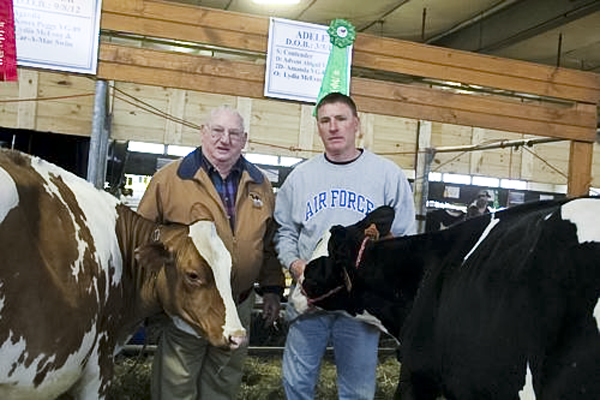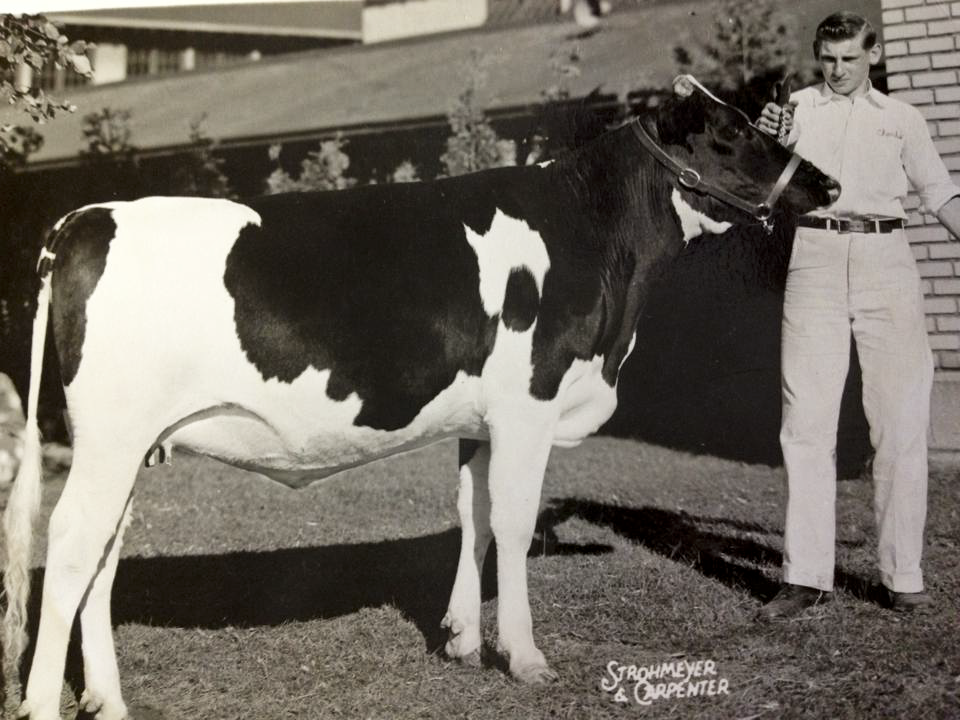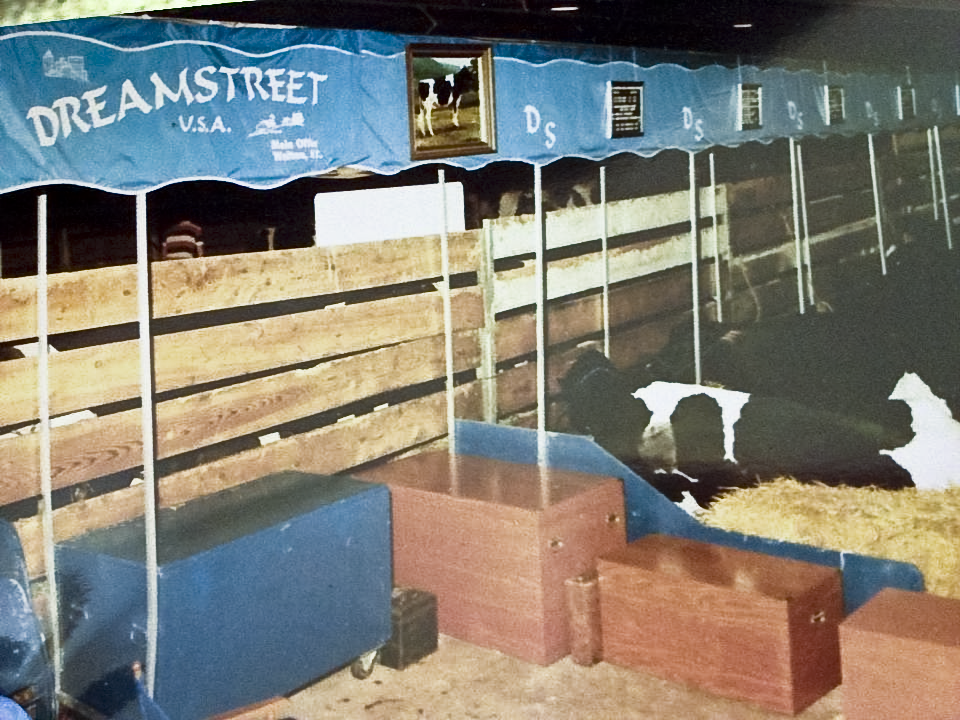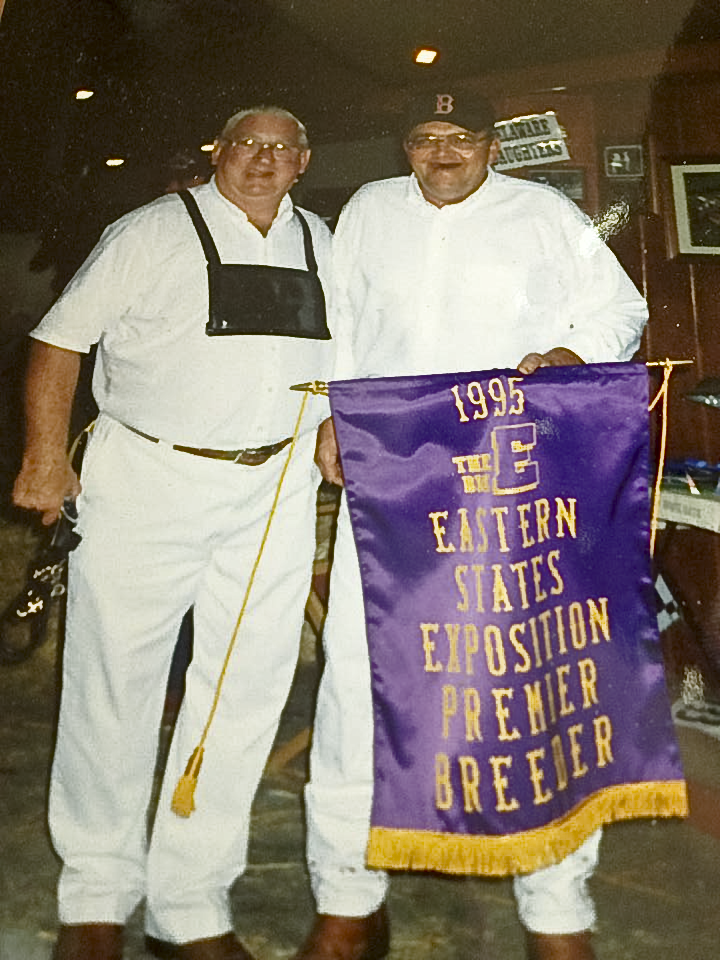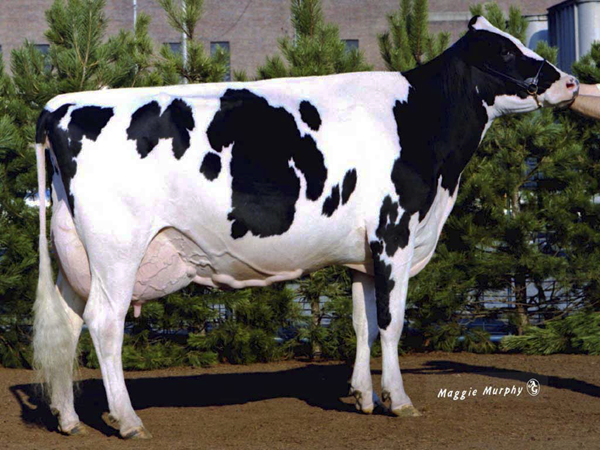Uncover the unknown tale of K-Kuipercrest Inspir Ardath, the Holstein cow that amazed the dairy world but never achieved her full potential. Want to find out why?
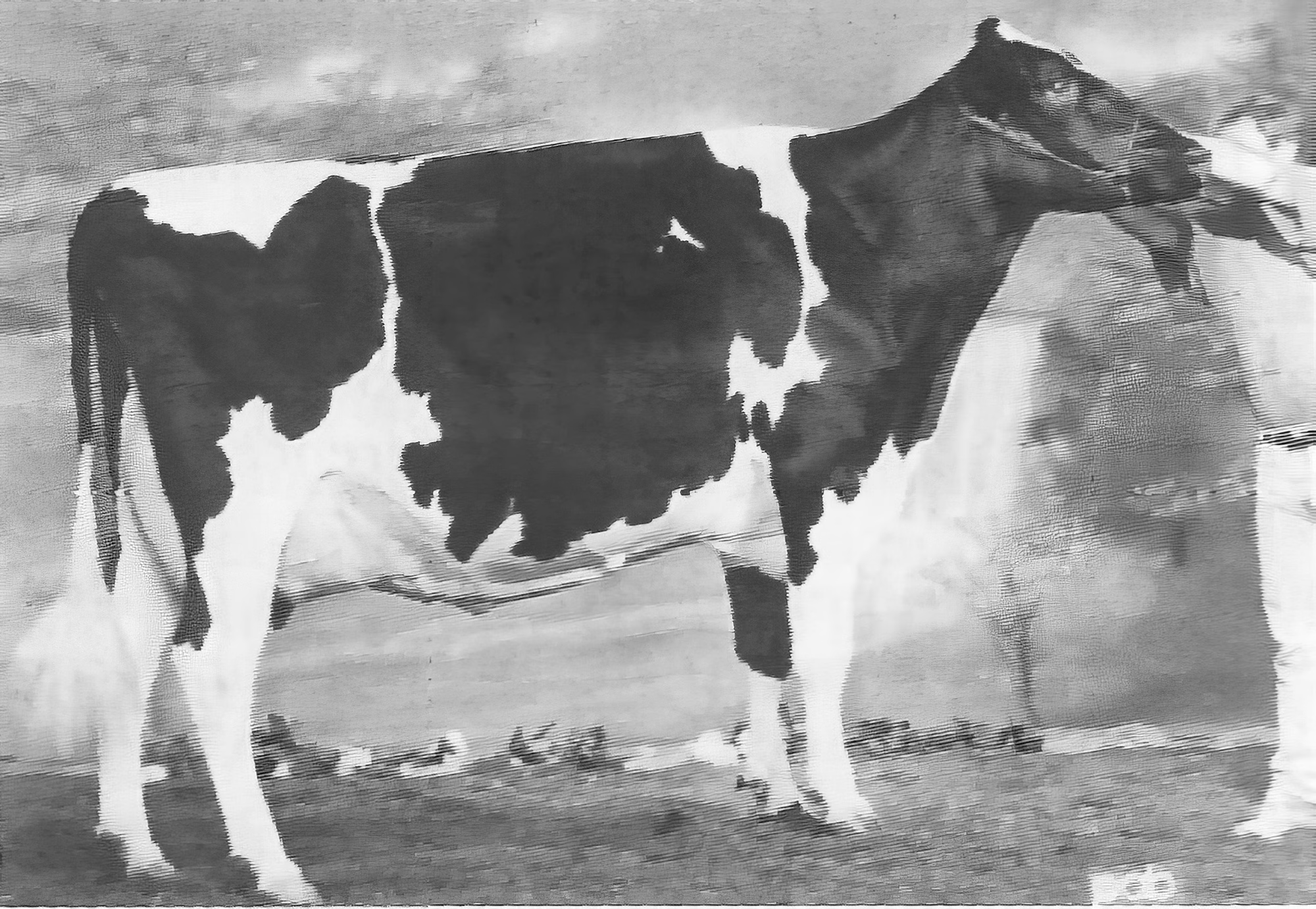
Once upon a time, there was a Holstein cow named K-Kuipercrest Inspir Ardath. Lawyer and esteemed dairy cattle historian Ed Morwick nearly acquired a half-interest in her. While he ultimately did not secure that half-interest—something that, in hindsight, was fortuitous—it turned out to be quite the setback for David Brown.
First, Let’s Introduce our Two Protagonists.
 David Brown, like all of us, had his flaws. Endowed with remarkable skills as a breeder, showman, and promoter, he was often hailed as the finest cattleman of his era. Growing up on Browndale Farms in Paris, Ontario, he had towering expectations to meet. His father, R.F. Brown, was a luminary in the dairy world, winning the esteemed Curtis Clark Achievement Award in 1988 and the Klussendorf Trophy at the 1993 World Dairy Expo. As one of Canada’s most successful breeders, R.F. clinched Premier Breeder and Exhibitor honors at the World Dairy Expo and the Royal Winter Fair. His accolades included five Grand Champions at the Royal Winter Fair: Green Elms Echo Christina (1972 and dam of Browndale Commissioner), Vanlea Nugget Joyce (1974), Marfield Marquis Molly (1978), and Du-Ma-Ti Valiant Boots Jewel (1988). David certainly had big shoes to fill. And fill them he did. His list of accomplishments was extensive: He led Ontario’s top herd in production in 1991, bred two All-Canadian Breeder’s Herd groups, and produced the All-American Best Three Females in 1998. He was twice crowned Premier Breeder at the International Holstein Show and accumulated 92 awards in All-Canadian and All-American contests from 1986 through 2004. Yet, despite two auction sales in 1991 and 1996 aimed at reducing his debts, financial relief was elusive. Over time, his wife left him, his children moved away, and his prized cattle were sold off. Eventually, David relocated to Colombia, where he passed away. Views on Brown are mixed—some saw him as a charming inspiration, while others regarded him as a rule-bending showman or an irresponsible debtor. Nonetheless, his rapid ascent and remarkable achievements in his lifetime are indisputable. Many wealthy individuals have invested vast sums of money into the cattle industry, chasing the same recognition, only to leave empty-handed. What distinguished David Brown was his nearly mystical talent for preparing animals for the show ring and transforming them into champions.
David Brown, like all of us, had his flaws. Endowed with remarkable skills as a breeder, showman, and promoter, he was often hailed as the finest cattleman of his era. Growing up on Browndale Farms in Paris, Ontario, he had towering expectations to meet. His father, R.F. Brown, was a luminary in the dairy world, winning the esteemed Curtis Clark Achievement Award in 1988 and the Klussendorf Trophy at the 1993 World Dairy Expo. As one of Canada’s most successful breeders, R.F. clinched Premier Breeder and Exhibitor honors at the World Dairy Expo and the Royal Winter Fair. His accolades included five Grand Champions at the Royal Winter Fair: Green Elms Echo Christina (1972 and dam of Browndale Commissioner), Vanlea Nugget Joyce (1974), Marfield Marquis Molly (1978), and Du-Ma-Ti Valiant Boots Jewel (1988). David certainly had big shoes to fill. And fill them he did. His list of accomplishments was extensive: He led Ontario’s top herd in production in 1991, bred two All-Canadian Breeder’s Herd groups, and produced the All-American Best Three Females in 1998. He was twice crowned Premier Breeder at the International Holstein Show and accumulated 92 awards in All-Canadian and All-American contests from 1986 through 2004. Yet, despite two auction sales in 1991 and 1996 aimed at reducing his debts, financial relief was elusive. Over time, his wife left him, his children moved away, and his prized cattle were sold off. Eventually, David relocated to Colombia, where he passed away. Views on Brown are mixed—some saw him as a charming inspiration, while others regarded him as a rule-bending showman or an irresponsible debtor. Nonetheless, his rapid ascent and remarkable achievements in his lifetime are indisputable. Many wealthy individuals have invested vast sums of money into the cattle industry, chasing the same recognition, only to leave empty-handed. What distinguished David Brown was his nearly mystical talent for preparing animals for the show ring and transforming them into champions.
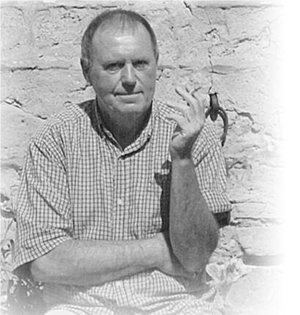 Edward Young Morwick, a distinguished author, cattle breeder, and lawyer, was born in 1945 on the Holstein dairy farm owned by his father, Hugh G. Morwick. His early memories of his mother carrying him through the cow aisles profoundly shaped his trajectory. Although Edward pursued a career in law, excelling immediately by finishing second out of 306 in his first year, he harbored a deep-seated passion for journalism. This led to his later work chronicling Holstein’s cow history. His seminal work, “The Chosen Breed and The Holstein History,” stands as a cornerstone for those delving into the evolution of the North American Holstein breed. In it, he compellingly argues that the most influential bulls were those of the early historical period. (Read more: Edward Young Morwick – Country Roads to Law Office)
Edward Young Morwick, a distinguished author, cattle breeder, and lawyer, was born in 1945 on the Holstein dairy farm owned by his father, Hugh G. Morwick. His early memories of his mother carrying him through the cow aisles profoundly shaped his trajectory. Although Edward pursued a career in law, excelling immediately by finishing second out of 306 in his first year, he harbored a deep-seated passion for journalism. This led to his later work chronicling Holstein’s cow history. His seminal work, “The Chosen Breed and The Holstein History,” stands as a cornerstone for those delving into the evolution of the North American Holstein breed. In it, he compellingly argues that the most influential bulls were those of the early historical period. (Read more: Edward Young Morwick – Country Roads to Law Office)
The Story of K-Kuipercrest Inspir Ardath
Arthur Kuiper meticulously built his herd around the cornerstone cow, Stone-Front Prestige Angie, at his Waupun, Wisconsin farm. Angie was a direct descendant of Prestige of Lakehurst, who himself hailed from the legendary Romandale Reflection Marquis, bred by Agro Bros. in Hamilton, Ontario. For those familiar with dairy cattle lineage, Marquis was an icon, undefeated in the aged bull class from 1967 onwards—the year he catapulted onto the premier show circuit. He earned the prestigious title of All-American aged bull not once but twice.
Stone-Front Prestige Angie produced an exceptional Paclamar Astronaut daughter named Stone-Front Astronaut Angela, who was in the dam when arriving at Kuipercrest Farm. Angela achieved an Excellent rating and recorded an impressive output of over 25,000 lbs. of milk. She then gave birth to Kuipercrest Warden Ardela, a Hilltopper Warden daughter. Ardela also achieved an Excellent rating, her pedigree further enhanced by a double cross of Astronaut genetics, tracing back through Warden’s mother.
In the late 1970s, Kuiper decided to sell off his herd. However, his emotional ties to a few members of the Angie family made him hold onto them. Faced with the challenge of finding a place for these cherished animals, he struck a deal with Theron Keller, a promising young farmer from Richland Center, Wisconsin. In exchange for Keller’s commitment to their care, Kuiper offered him partial ownership of some of these prized cattle.
In 1987, Kuipercrest Warden Ardela gave birth to a daughter named K-Kuipercrest Inspir Ardath. The “K-Kuipercrest” prefix honored both Keller and Kuiper, while “Inspir” highlighted her sire, Hanover-Hill Inspiration. Ardath’s early years were typical for a calf, marked by average growth and development. In fact, she flourished much more than the KuiperKeller partnership itself. Primarily a cash crop farmer managing extensive land, Keller wasn’t providing the cattle with the meticulous care Kuiper believed they deserved.
Brown’s Return to Our Story
In March 1993, David Brown made an incidental stop at the Fond du Lac sale barn during a visit to Wisconsin. Positioned in the front row was the enormous K-Kuipercrest Inspir Ardath. Despite her fleshy and ample appearance, Brown’s expert eye was immediately drawn to her front legs, particularly the femur— the skeleton’s longest bone, which connects the knee to the upper body. Even though Ardath was as rotund as a bear preparing for winter, Brown was confident she could be transformed into something extraordinary. The length, shape, and contour of her femur bone unequivocally promised it.
After leaving what was the winning bid with the sales manager, Brown returned to his Cher-Own Farm in Paris, Ontario. Before long, K-Kuipercrest Inspir Ardath had made her way to his barn. You would have encountered her if you stepped through Brown’s milkhouse door in June 1993. She stood in the second box stall, her chin perched on the top rail, with her hindquarters seemingly touching the pen’s eastern wall. Her stature was so impressive and her presence so commanding that one’s initial impression felt almost like an illusion.
Despite being before cell phones and the internet, word of a “special” cow would spread like wildfire through the “dairy industry”. Visitors came in torrents. Mexican and South American buyers on the back roads buying cattle asked their Canadian agents for side trips to the CherOwn farmstead to see K-Kuipercrest Inspir Ardath. They came; they stared in amazement. The cow looked great alongside two Royal Winter Fair Grand Champions, Du-Ma-Ti Valiant Boots Jewel and Merkley Starbuck Whitney, who occupied adjoining box stalls.
When Ken Empey first laid eyes on Ardath, he was struck with awe. He left the stable, sat in his car for a moment, and then felt compelled to return to the barn. He stood there, staring at her for another ten minutes. Finally, he went back to his car and drove off. In Empey’s estimation, K-Kuipercrest Inspir Ardath was superior to Brookview Tony Charity in every conceivable way.
Public interest surged and offers rolled in. Yet, Brown deemed them frivolous, most hovering around $100,000. He stood firm, unwavering in his quarter-million-dollar valuation.
Morwick’s Return to Our Story
To Morwick, the cow seemed undervalued. He speculated that she could potentially rival the legendary Glenridge Citation Roxy or even Snow-N Denises Dellia. From his perspective, investing in her was a far superior choice compared to acquiring a descendant from the Roxy or Lulu families, despite their high demand at the time. Roxys and Lulus were abundant, with hundreds on the market.
Standing there in all her glory: an outstanding bovine specimen with three generations of Excellent-rated dams; her lineage included a twice All-American great-granddam, and she descended from the top sires of their respective eras. Indeed, it is a remarkable pedigree.
”Yes,” said David Brown, “I value this cow at a quarter-million dollars, and I’ll take $125,000.00 for a half interest.
There’s lots of money left in her, even at that price.”
“Surely not for Morwick,” Morwick said. ”You wouldn’t charge him that much, would you?”
“Sure would,” said Brown.
The Enigma
Morwick was taken aback by Brown’s lack of leniency, especially considering the hefty legal bills. Brown had accumulated $25,000 in fees with Morwick’s law office, including costs from suing Holstein Canada over disciplinary actions for supposed ethical breaches at the Royal.
One day when Morwick asked Brown when he might pay, he got choked up and teary. “Surely you can pay something,” Morwick said.
“These bills represent a lot of work.” In the end, he gave Morwick a cheque for $5,000.00. I told him he could forget the rest.
Morwick decided to absorb the loss.
If David couldn’t pay Morwick for quality work faithfully performed, he asked himself, then how did he come up with the $5,000.00 he paid for K-Kuipercrest Inspir Ardath?
This was the enigma.
Morwick felt that “All these show guys are the same. Big shots with not a pot to let go in, they can always come up with enough money to buy a good cow. In these guys, ego always gets ahead of responsibility.” Morwick felt this way as he had worked with Holstein promoters for twenty-five years.
Thus, despite Morwick’s earlier gift of $20,000.00 to Brown, the latter now expected Morwick to pay the full price for a half share in his prized cow.
Morwick figured an offer in writing might tempt him. He drew up a contract: “Offer to Purchase re: K-Kuipercrest Inspir Ardath,” the document was titled. The parties to the contract were David John Brown (hereinafter “Vendor”) and Edward Young Marwick (hereinafter “Purchaser”).
There were the usual paragraphs, all with appropriate titles. Paragraph 3 said, “The Purchaser hereby purchases, and Vendor hereby sells, for the sum of sixty-five thousand dollars, a one-half interest in K-Kuipercrest Inspir Ardath.
It said the purchase price will be paid in cash upon closing this transaction.”
Paragraph 4 states, “Purchaser acknowledges that he, his veterinarians, or other persons on his behalf have personally inspected Ardath and are satisfied that she is in sound condition and free from disease or defect.”
The heartbreaker was paragraph 5: “The parties agree to obtain and maintain mortality insurance and insurance against all the usual perils in an amount equal to at least $130,000.00.”
Morwick’s secretary prepared the Offer with blue document covers and red seals for the signatures of both the Vendor and the Purchaser. I placed four copies into an envelope and delivered them to Brown. He extracted one and placed it deliberately atop the milk cooler.
He read the Offer. Very slowly. He came to the dollar amount. “Nope,” he said, “not enough money.” He picked up all four offers, placed them together, shook them up and down, and hit their bottoms on top of the cooler so they were all together in a tight little stack. Then he handed them back. “Give me a hundred and a quarter for a half-interest,” he said. “There’s plenty of money left for both of us.”
The next day, walking up John Street, Morwick passed a coffee shop they called the Donay Cafe. There was a For Sale sign in the window. I called the broker. “It’s listed at $199,000.00,” he told me. “Wanna look at it? It’s a power of sale. It’s going cheap.”
“Sure,” Morwick said. ”I’ll meet you there in an hour.”
Morwick redirected the $135,000 originally set aside for the half-interest in K-Kuipercrest Inspir Ardath and invested it in purchasing a building. Subsequently, he relocated his law practice to the ground floor of this new property.
Ardath Goes Head to Head with Legends
In November 1993, Brown exhibited Ardath at the Royal Winter Fair. When she entered the five-year-old class, she was bone dry; Brown had her on a strict diet to refine her form. Despite her condition, Ardath secured a commendable second place, trailing behind Merkley Starbuck Whitney, who was on her path to the reserve grand championship. Whitney, showcased by Brown for her Japanese owners, was in prime condition, with her udder at its peak. The seasoned judges at ringside could not help but remark, “The second cow’s the better one,” with her longer head, broader muzzle, and more correct front legs.
Later in the year, Whitney claimed the title of All-Canadian five-year-old, with Ardath securing the Reserve position. “Just wait until next year,” Brown declared.
The Unfortunate Ending
A month later, Morwick visited Brown’s farm. Ardath was conspicuously absent from the second box stall. “Where is she?” Morwick inquired.
“She’s dead,” said David. “She developed a lung adhesion.”
Part of her lung adhered to her rib cage. It proved fatal.”
“Too bad,” Morwick said.
Brown’s smile turned rueful as he clutched the top rail of the pen with both hands, his gaze dropping to the ground.
“I should have taken your offer,” he said.
“Why?” Mowrik replied.
“Then she would have been insured,” responded Brown.
“She wouldn’t have passed the vet check,” Morwick said. “The vet would have seen the adhesion.”
“No, She would have. Draper would have passed her.”
“That’s the cattle business,” Morwick said.
The Bottom Line
In the competitive world of dairy cattle showing, the story of K-Kuipercrest Inspir Ardath stands out as a lesson in missed opportunities. Navigating pedigrees, evaluations, and high-stakes valuations, this tale reveals the complex interplay of passion and practicality. From Ed Morwick’s initial hesitation to David Brown’s firm pricing, every decision and negotiation shaped Ardath’s unrealized potential. The emphasis on vet checks, insurance, and legal exchanges underscores the need for diligence and strategic partnerships. Ardath’s journey highlights the cost of pride and the importance of protecting investments with foresight and humility. This story serves as a reminder to balance enthusiasm with prudence to avoid squandering potential through neglected connections and misjudged valuations.
The Chosen Breed and The Holstein History by Edward Young Morwick
Anyone who appreciates history will enjoy either the US history (The Holstein History) or the Canadian History (The Chosen Breed) by Edward Morwick. Each of these books is so packed with information that they are each printed in two separate volumes. We had a chance to interview Edward – Edward Young Morwick – Country Roads to Law Office and got a real sense of his passion and quick wit which also come shining through in his books. Be sure to get your copies of this amazing compilation of Holstein history.
Key Takeaways:
- David Brown’s encounter with Ardath at the Fond du Lac sale barn marked the beginning of a high-stakes saga for this extraordinary cow.
- Ardath’s impressive physical attributes, particularly her femur bone, created significant public interest and high offers, but Brown’s asking price remained firm at a quarter-million dollars.
- Morwick, a lawyer with substantial involvement in the dairy cattle industry, initially considered investing in Ardath but ultimately chose to purchase a real estate property instead due to disagreements over the cow’s valuation.
- Despite being highly touted and drawing crowds, Ardath faced an untimely demise due to a lung adhesion, leading Brown to regret not securing insurance as suggested by Morwick.
- Morwick and Brown’s professional and financial dealings added a layer of complexity and tension to their interactions, influencing the decisions related to Ardath.
Summary:
The story of K-Kuipercrest Inspir Ardath intertwines the fates of legendary dairy cattle historian Ed Morwick, lawyer, and dairy cattle savant David Brown. Ardath, an exceptional Holstein cow with an impressive lineage, captured the attention and admiration of many, including Morwick, who offered to buy a half-interest in her. However, Brown’s high valuation and refusal to settle on a lower price led Morwick to invest in real estate instead. Tragically, Ardath later died due to a lung adhesion, leaving Brown to rue his decision, as the cow could have been insured had he accepted Morwick’s offer. This tale highlights the complex interdependency of passion, investment, and fortune within the cattle business.








